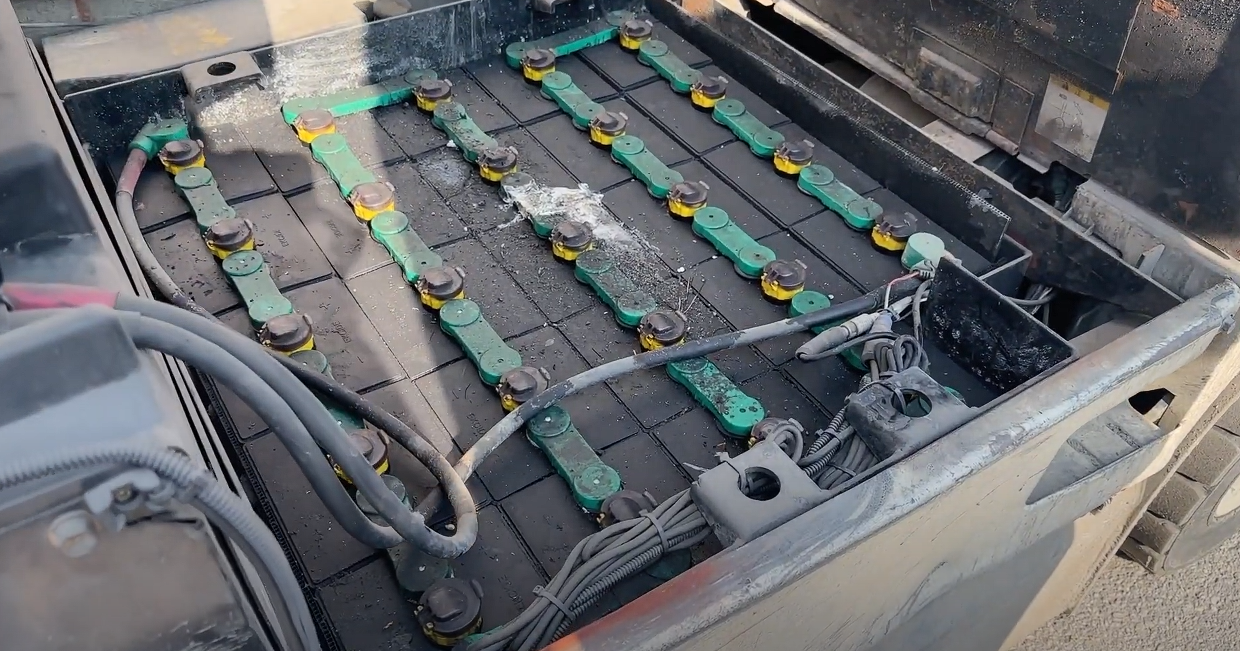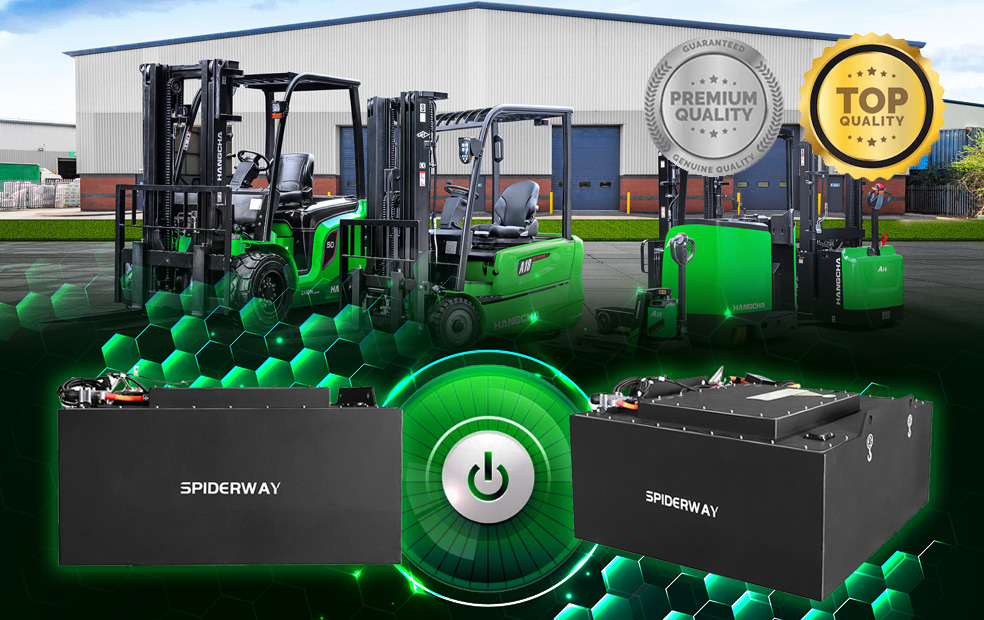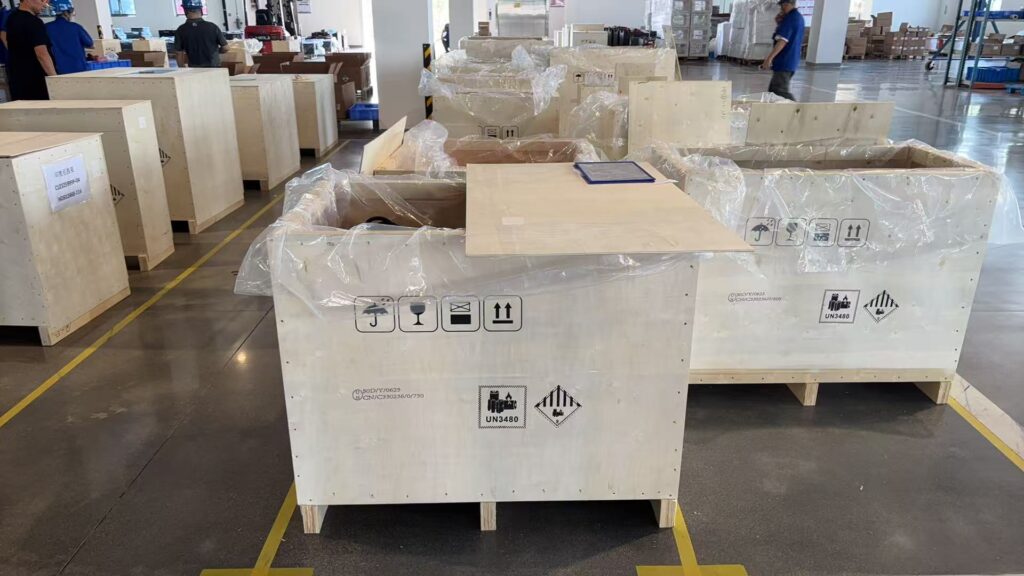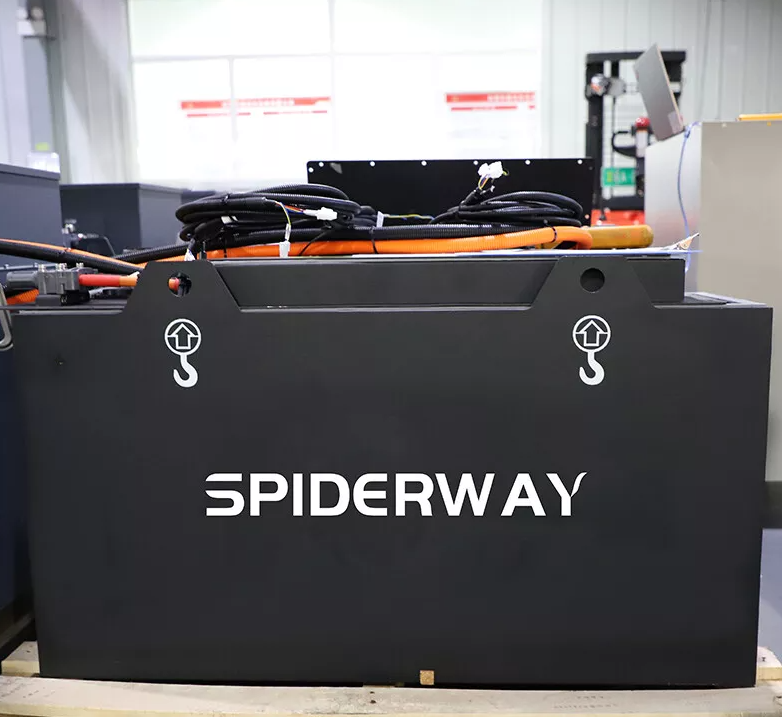
In the fast-paced world of material handling, electric forklifts have become an essential asset for many industries. Their reliability and efficiency depend significantly on the performance of their batteries. Knowing when to replace the battery is crucial for maintaining productivity and ensuring the safe operation of your forklift. This article will explore the key indicators that signal it's time to swap out your forklift's battery, with a particular focus on lithium - iron - phosphate (LFP) batteries.

1. Diminished Run - Time
One of the most obvious signs that your forklift battery needs replacement is a significant reduction in run - time. If your forklift used to complete a full shift on a single charge but now struggles to last half a shift, it's a clear indication that the battery's capacity has declined. For example, if an electric forklift with a lead - acid battery that once provided 8 hours of continuous operation now only manages 4 hours, this could be due to the battery's internal components wearing out over time. The lead plates in a lead - acid battery can corrode, reducing the battery's ability to store and release energy efficiently.
LFP batteries, on the other hand, generally have a longer cycle life compared to lead - acid batteries. However, they are not immune to capacity degradation. As LFP batteries go through charge - discharge cycles, the active materials in the battery electrodes gradually change, which can lead to a decrease in capacity. If you notice that your LFP - powered forklift's run - time is consistently shorter than it should be, despite proper charging and maintenance, it might be time to consider a replacement.
2. Extended Charging Time
Another tell - tale sign is an increase in the time it takes to fully charge the battery. A healthy forklift battery should charge within a reasonable time frame. For lead - acid batteries, if the charging time has doubled or tripled compared to when the battery was new, it's a sign of trouble. This could be due to sulfation, a process where lead sulfate crystals build up on the battery plates, increasing resistance and reducing the battery's ability to accept a charge.
For LFP batteries, a significant increase in charging time could indicate issues such as a malfunctioning battery management system (BMS) or a degradation of the battery cells. The BMS is responsible for regulating the charging and discharging process to ensure the battery operates safely and efficiently. If the BMS is not working correctly, it may not be able to optimize the charging process, resulting in longer charging times.
3. Frequent Need for Maintenance
As batteries age, they often require more frequent maintenance. Lead - acid batteries, in particular, need regular checks of the electrolyte level and may require the addition of distilled water. If you find yourself having to top up the electrolyte more often than usual, or if you notice signs of corrosion around the battery terminals, it's a sign that the battery is nearing the end of its life. Corrosion can interfere with the electrical connection between the battery and the forklift, reducing the battery's performance.
LFP batteries are generally maintenance - free compared to lead - acid batteries. However, if you start to notice abnormal behavior, such as the battery getting unusually hot during charging or discharging, it could be a sign of a problem. Although LFP batteries are more stable and less prone to overheating than some other battery chemistries, issues can still arise, especially if the battery has been subjected to extreme conditions or has experienced a large number of charge - discharge cycles.
4. Visible Physical Damage
Any visible physical damage to the battery is an immediate red flag. For lead - acid batteries, this could include a swollen or cracked casing. A swollen casing may be a sign of overcharging or internal pressure build - up, which can be dangerous as it could lead to electrolyte leakage. Electrolyte leakage not only damages the battery but can also be harmful to the environment and pose a safety risk to operators.
For LFP batteries, visible damage such as a punctured or dented battery case should not be ignored. Even a small puncture could potentially expose the battery's internal components to air or moisture, which could lead to a short - circuit or other performance issues.
5. Decline in Performance
If your forklift is experiencing a decline in performance, such as slower lifting speeds or reduced acceleration, it could be due to a failing battery. A battery that is unable to deliver sufficient power to the forklift's motor will result in sub - optimal performance. This is particularly important in applications where the forklift needs to handle heavy loads quickly and efficiently.
In the case of LFP - powered forklifts, a decline in performance could also be related to the battery's state of health. As the battery ages, its ability to provide a consistent and high - power output may decrease. This can be especially noticeable when the forklift is under heavy load or when operating in extreme temperatures.
6. Age of the Battery
The age of the battery is also an important factor to consider. Generally, lead - acid batteries in forklifts have a lifespan of 2 - 5 years, depending on usage, maintenance, and environmental conditions. If your lead - acid battery is approaching or has exceeded this age range and you are experiencing any of the above - mentioned issues, it's likely time for a replacement.
LFP batteries, known for their longer lifespan, can last anywhere from 5 - 10 years or even more with proper care. However, this is still a general estimate, and factors such as the number of charge - discharge cycles, operating temperature, and the quality of the battery can all impact its actual lifespan.
Consider SPIDERWAY LFP Forklift Batteries
When it comes to replacing your forklift battery, SPIDERWAY LFP forklift batteries offer several advantages. SPIDERWAY LFP batteries are designed with advanced technology to provide high energy density, which means they can store more energy in a smaller and lighter package compared to traditional lead - acid batteries. This not only improves the overall performance of the forklift but also reduces the vehicle's weight, leading to potentially lower energy consumption.





These batteries have an impressively long cycle life, often capable of withstanding thousands of charge - discharge cycles. This longevity reduces the frequency of battery replacements, resulting in significant cost savings over time. Additionally, SPIDERWAY LFP batteries have a fast - charging capability, allowing you to get your forklift back in operation quickly. They can charge to a high percentage of their capacity in a relatively short time, minimizing downtime during the charging process.
SPIDERWAY's LFP batteries also come with a reliable battery management system that ensures the battery operates within safe parameters. The BMS monitors and controls factors such as voltage, current, and temperature, protecting the battery from overcharging, over - discharging, and overheating. This not only enhances the safety of the battery but also extends its lifespan.
In conclusion, being aware of the signs that your forklift battery needs replacement is essential for maintaining a smooth - running operation. When the time comes for a replacement, consider the numerous benefits that SPIDERWAY LFP forklift batteries have to offer, and make an informed decision that will optimize the performance and efficiency of your forklift fleet.
https://www.spider-way.com/when-is-the-best-time-to-replace-forklift-batteries/?_unique_id=687b44f259de2
Comments
Post a Comment